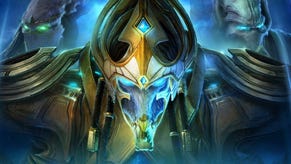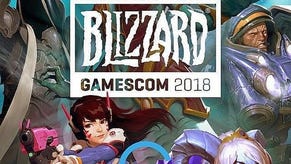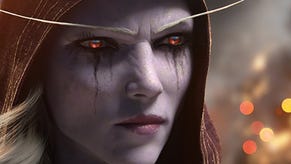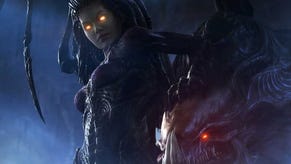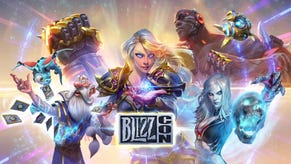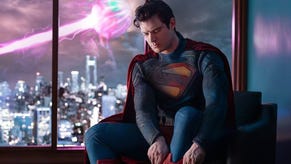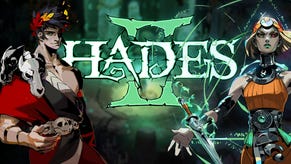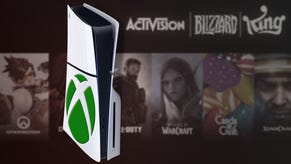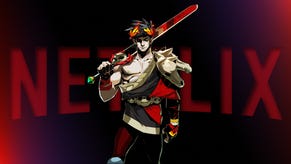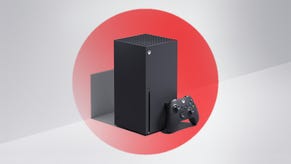StarCraft 2's Rollercoaster Decade, As Remembered By Its Developers
Reflections on StarCraft 2's early success, the impact of free-to-play, and what Blizzard might have done differently.
This article first appeared on USgamer, a partner publication of VG247. Some content, such as this article, has been migrated to VG247 for posterity after USgamer's closure - but it has not been edited or further vetted by the VG247 team.
StarCraft 2 turns 10 this week. It's fair to say that it's been a rollercoaster decade for Blizzard's real-time strategy game, full of some strong highs and some powerful lows (sidelong glance at the Swarm Host). The accepted wisdom is that MOBAs have overtaken the once-popular RTS genre, but StarCraft 2 still has plenty of fun, not to mention a robust competitive scene.
As a lapsed fan who recently returned myself, I wanted to catch up with some of the key figures on StarCraft 2's development and beyond. To that end, I spoke over email with Production Director Kaeo Milker, Game Designer Kevin Dong, and Designer Ryan Schutter, with pro StarCraft 2 player Lee "INnoVation" Shin Hyung also chipping in. Together they trace StarCraft 2's recent decade, discuss some of its biggest successes and controversies, and reflect on what they might have done differently given the chance.
StarCraft 2's Early Days (2010)
StarCraft 2 was released in 2010 amid a large publicity campaign and plenty of excitement. Blizzard pushed StarCraft 2's esports hard, and the competitive scene was initially very strong.
Tell me about your first impressions of StarCraft 2? How did it initially compare to the original StarCraft? How did you feel about the decision to stick with the original three races?
Kaeo Milker, Production Director: I joined StarCraft 2 as the game's first on-the-ground producer in February of 2005. The team was small and we were just getting started on our new game engine at the time. So, the first order of business was to recreate Brood War in Warcraft 3 and start prototyping ideas for SC2 while working on the new engine.
It was very clear from early on that we were going to be reverential to [the original StarCraft] and that we'd be building upon it with careful additions and changes rather than throwing out large swaths of the game or layering on dramatic additions. Striking that balance between staying true to SC1 and innovating for SC2 was a constant source of conversation and debate. So much of that early work was surrounding making the three races feel true to the original with these new pivots without breaking the magic of the game.
We knew that any talk of additional races would have to wait until we got the core three right, and as time has told we didn't branch beyond them. I was always interested in exploring adding a fourth race, but there were many compelling reasons to not do so. Ultimately the campaign became the place we got to indulge in some of the fun parts of creating additional races when we worked on things like the Xel'Naga and Hybrids.
The early days of StarCraft competition (2010 - 2012) were very strong. Plenty of money in the scene, competitions like the IGN Pro League. What are your memories of those days?
KM: The sheer scale and spectacle of seeing the game played at that level, with that amount of attention was inspiring as a game developer. We'd approached StarCraft 2 with an eye for competitive play from its inception, but we had a more organic approach to how the esports scene would develop compared to our later, more curated efforts. It was also all happening in an era where other games's esports were blossoming and elevating the entire scene across the industry, which was as exciting to watch as it was to participate in.
The accepted wisdom is that MOBAs badly hurt the RTS competitive scene with their accessibility, team-based play, etc. Was there anything StarCraft 2 could have done to retain its initial momentum?
Ryan Schutter, Designer: Let me preface my answer to this by saying I was not a developer on StarCraft 2 at the time. I was just a player, modder, and fan in a totally different career so this is from my perspective outside of Blizzard and the StarCraft 2 team.
Besides the popularity of MOBAs, the rise of the free-to-play model came about at the same time. I think both had an impact on the perception of StarCraft 2 and its success at the time. But I think that was where the real harm was done, the perception, not the reality. I think StarCraft 2 remained fairly consistent overall, and that MOBAs actually really did a lot not just attracting RTS players, or existing players in general, but also bringing in new players who had not played too many competitive video games at all.
StarCraft 2 continued to chug along with a huge playerbase, and tons of support from Blizzard. As you mentioned, perhaps momentum was impacted, but I think StarCraft 2, and in particular the feeling of mechanical skill requirement hanging over its competitive multiplayer, and the mentality that hardcore 1v1 ladder was the "correct" way to play the game, was always going to have less broad appeal than something like a MOBA. The "ladder anxiety" people feel playing the game is very real as well, and I think playing a team game relieves a lot of that pressure regardless of whether it is a MOBA or something else.
I think if back then StarCraft 2 had something like its Co-op Missions mode that it has now, or perhaps something even more robust, it would have gone a long way to feel like a more welcoming and accessible game. I believe that could have had a real impact, but we'll never know for sure. At the end of the day I think if StarCraft 2 was not the game that it is, there would be a huge hole in competitive games in general. I think a competitive 1v1 game like StarCraft 2 has its own kind of players and following, and I am so proud of what the game is for that community.
There was much discussion about the relative strength of the Korean pro scene versus North America and Europe. What was your perspective on that? Did it help or harm the global scene?
RS: Again, I have only been at Blizzard for the last 6 years so this is mostly from my perspective as a fan from the early days. I think balancing the Korean and Global pro scenes for StarCraft 2 has proved to be a serious challenge throughout the years. You are kind of caught between a rock and a hard place as the developer, because Korea is obviously the heart of esports for Brood War, but you also want StarCraft 2 to be more of a global game. Esports fans expect you to dedicate huge resources to StarCraft 2 esports in Korea, but then will turn around and criticize the global scene for being less competitive. I think outside of Korea, StarCraft 2 players were at a serious disadvantage in the early days, and the Korean players's dominance was probably inevitable given the many complicated realities of the situation.
It definitely harmed the global scene, because while many of the most dominant StarCraft 2 pros were in Korea, most of the fans were outside of it. Having your hometown heroes get destroyed over and over, or worse not having a hometown hero at all, is definitely going to have an impact.
But it also uplifted the scene. The incredibly high bar that the Korean players were able to set has elevated the entire game. As a developer, seeing the game played at that level also keeps you inspired and excited to work on it every day. And from the esports side, the Korea vs the World mentality that took hold in the StarCraft 2 scene helped to propel it to some degree. Even now the community still often measures global players by how well they perform against Korean pros. Fans still debate whether [Joona "Serral" Sotala] can ever truly be considered the best player in the world without moving to Korea and winning a [Global StarCraft 2 League]. That backdrop creates its own interesting story for StarCraft 2 esports, and it has fascinated the community.
And without those rivalries or that history, StarCraft 2 esports would be less interesting today with the rise of the global community to the highest competitive level. Today we have incredible players from Europe, the Americas, and China all able to compete with top Korean players. That has ushered in a new age of StarCraft 2 esports that feels incredibly exciting, and I think that history is a big part of that.
INnoVation: Korean players were dominant in the past but the skill discrepancy between Korean and non-Korean players have diminished with some of the best players today being non-Korean players. I think what we see today is better for the global scene.
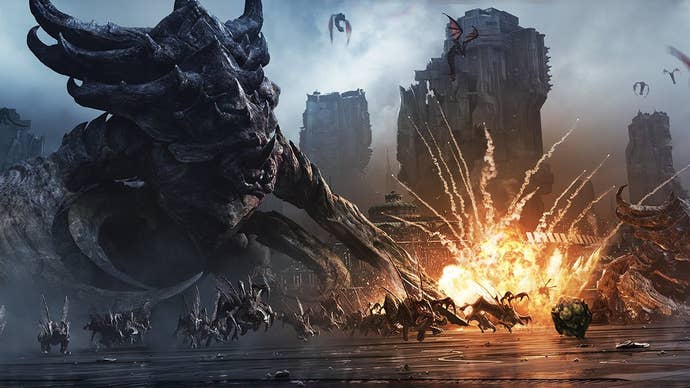
Heart of the Swarm Tries to Revitalize StarCraft 2 (2013)
StarCraft 2's popularity started to tail off due to the success of League of Legends, which introduced a slimmer, more accessible, and most importantly, free, genre to the general public. Heart of the Swarm wound up bringing a lot of major changes to the overall competitive game, many of which are still felt today. It also introduced the Swarm Host—a crab-like Zerg unit capable of spawning Locusts that frequently led to unwinnable wars of attrition.
Talk about the feeling arounds Heart of the Swarm. How much did it do to reinvigorate the community?
KD: I think for many, Heart of the Swarm was a breath of fresh air. I would argue that at the end of Wings of Liberty, the game was more mapped out than it has ever been, and Heart of the Swarm did a good job of throwing a wrench into all of that.
As a fan, community member, and guide writer at the time of its release, I was a little sad that my guides were completely invalidated overnight. But it was much overshadowed by the sense of discovery I felt when engaging with the new units and interactions. I can talk about some of my favorite ones in retrospect.
First was probably the Widow Mine, which offered for lots of exciting explosive moments without necessarily dealing game-ending damage. This unit is part of the famous 4M unit composition (Marine, Marauder, Medivac, Widow Mine), which has given us some of the most exciting games of StarCraft history. The new Medivac Ignite Afterburners ability allowed Terran to show off their multitasking skill with drops and funnily enough, enabled Mechanical unit-based play with the introduction of Hellbat drops. And finally, the Viper enabled Zerg players to break stalemates, especially against the long-ranged siege units of the other races.
The Swarm Host famously resulted in some matches that were between two or three-hour slogs. What's your recollection of that time? Was there anything Blizzard should have done differently?
RS: I definitely remember these games vividly. I can't tell you what was going on in the balance team at the time, but I can tell you we experience similar challenges today, though usually a little less blatant than three hours of Locust waves running into each other.
It is always a challenge to determine the right way to tackle a problem. I have always heard that while Brood Lord-Infestor was one of the most despised meta-games in StarCraft 2's history, it was also one of the most statistically balanced. Obviously, you want the game to be fun and you want it to be exciting, but you are always playing with fire when you touch balance, so you have to be cautious.
Sometimes it isn't enough to just react quickly. We recently rolled out some balance changes last month, and some of those changes have had the impact we expected, but some have not. Even if you recognize a problem it isn't always easy to fix it.
At the time these Swarm Host games certainly felt tedious and comical. Maybe getting effective changes in faster would have been ideal, but I can understand the challenges that would have been facing the team. One of the great things about supporting this game for an entire decade and beyond is you get to see something like this be just a chapter in the awesome story of StarCraft 2 esports.
Legacy of the Void (2015)
Legacy of the Void was StarCraft 2's final major expansion. Intended to wrap up the arc that began with the original game, it also brought some fundamental changes intended to speed up the pace of StarCraft 2's early game.
Legacy of the Void brought a lot of changes designed to speed up the early stages competitive game. How successful were they, ultimately?
KD: This topic was actually brought up within the StarCraft community recently. We made quite a few changes to early game in LotV, but probably the most impactful one (and the one the StarCraft community had been talking about) had to have been the increase of starting workers from 6 to 12. Some criticisms of this change include lower opportunity cost of strategic decisions and less discriminating early-game choices.
I was not part of the team that made these decisions. However, I will go so far to say that I think this is one of the best changes ever to happen to StarCraft 2. For every valid strategical rationale you could give arguing one way is better than the other, I believe there is an equally valid rebuttal. By the end of the day, in my opinion, these debates are a wash in the larger scheme of things, and they often come down to personal preference that heavily depends on what each individual values in a game.
Here's what it came down to for me: Though there were more opportunities for interaction in "early-game" pre-LotV due to the longer early-game, a very large percentage of these games featured relative inaction from both players, especially in the first ~5 minutes. By cutting down on early-game, the 12-worker fast-forwards the game to mid-game where player interaction is often featured prominently. This, in effect, allows players to experience a much larger percentage of game time playing a multiplayer game rather than what is essentially a single-player game.
Beyond its effect on players, the 12-worker start had a similarly dramatic effect on the spectator experience as well. Prior to LotV, StarCraft commentators were often forced to fill large swathes of time, especially when both players were playing standard macro builds. LotV heavily reduced that time by upwards of 3 minutes. Personally, I believe these benefits alone vastly outweigh potential negatives players may perceive the change has caused.
What was the state of the competitive game around the beginning of Legacy of the Void? Did any one race have a particular advantage? What did new units like the Adept mean for the game?
KD: At the beginning of Legacy of the Void, players were mostly still getting used to the new economy changes and newly introduced units. The only thing that really sticks out to me is that games entered into late-game more often, probably due to some combination of economy changes, new maps, and unfamiliarity on the players's parts on how to close out games.
Another both fun and funny notable change was the introduction of the ability for Medivacs to pick up Siege Tanks, which was referred to by the community as the Tankivac. In the end this ability was removed, probably for the best, but it sure was interesting when it was around.
No race really sticks out to me as being particularly strong around this time, unlike the beginning of Wings of Liberty where Terran was strong (probably mostly due to map design at the time), and the beginning of Heart of the Swarm where Terran was strong once again (probably due to a combination of the strength of the Hellbat and the new Ignite Afterburners ability on the Medivac).
I wasn't part of the design team at the time, but in terms of new units, I was especially impressed with the design of the Ravager. With a single unit, Zerg was given a way to interact with Force Fields against Protoss, a way to introduce more skill and break mass Roach mirrors in ZvZ, and a situational way to engage with the newly introduced Liberator against Terran. In addition, its large size prevented it from scaling too drastically as late-game encroached.
At release, the Adept was immensely powerful and often featured in all-ins that either directly killed the opponent or did game-ending damage, especially against Terran. One of the ways this was addressed was with a suggestion from one of our competitive players, Patrick "Liquid'Bunny" Brix, who suggested we reduce their damage by just one, such that they would have to three-shot SCVs and Marines instead of two-shotting them.
Also, I'm going to take this opportunity to plug one of my favorite game-modes, 2v2, where I feel the impact of Adepts doesn't get talked about nearly enough. Previously, the combination of Hellions and Zerglings (sometimes affectionately called cats and dogs) were such a potent combination that Protoss was widely regarded as the worst race in 2v2. But because Adepts had a strong matchup against both these units, Protoss became much more competitive.
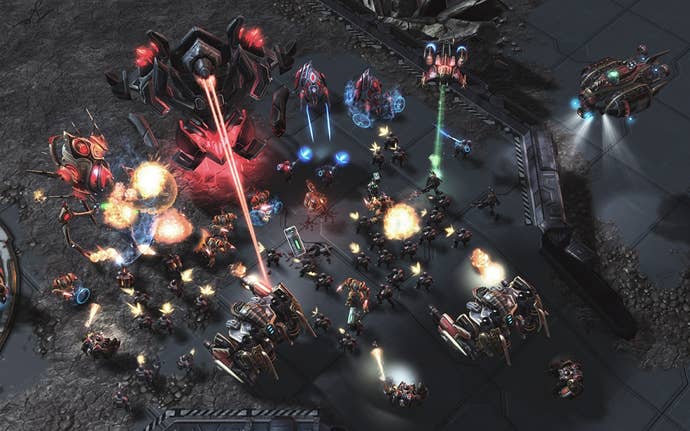
The Present Day and the Future
As StarCraft 2 celebrates its 10th anniversary, it can count among its blessings a small but fervent community, a surprisingly robust co-op mode, and a competitive community that continues to offer decent cash prizes. As for the possibility of a StarCraft 3, we can only dream.
In hindsight, what was the moment where you realized that the competitive play of StarCraft 2 had changed forever and the modern game had emerged?
KD: This one is really hard as I feel the game is continuously evolving to its "final form," but at the same time, very easy because I could give so many answers from so many different perspectives.
In terms [of] my personal vision of how this game plays out, I believe we are closer than ever and have especially made one of the biggest leaps ever from 2019 to 2020. For the most part, games feel very dynamic now and players have the opportunity to make many tactical choices that can affect the outcome of the game throughout the course of the game.
As for the competitive scene, it would have to be the moment that Serral won BlizzCon. For those of us who have been involved with StarCraft for almost 20 years, we were conditioned to expect Korean champions as one of the only constants the scene had. Serral completely shifted that paradigm, and ever since his victory, non-Korean players have started to become seen as regular championship contenders. Even as someone who regularly goes to live events, witnessing Serral's win was one of the electrifying experiences I've ever had as you could really feel the palpable excitement of the entire BlizzCon hall.
The relative balance of Zerg, Protoss, and Terran has been a point of contention going back to the beta. How do you feel Blizzard has done in bringing the balance of these races into alignment over the life of StarCraft 2?
KD: Among the popular competitive games in today's market, StarCraft faces some unique challenges in that it's an asymmetrically balanced game with a high barrier to entry to swap factions. In MOBAs, for example, both sides generally have access to the same tools and the mechanic of banning is a safeguard against outliers in balance. In Hearthstone, players are expected to be masters at multiple classes should they wish to play at the highest level. Even in fighting games, which StarCraft is probably most similar to in this sense, players often have pocket characters they can use for particularly bad matchups for their mains.
As a result, we feel any individual change we make to our game has drastic overarching ramifications and there's a sense we have to be more cautious. The biggest challenge this presents is when there is a perceived problem within the community, and we have to decide whether to action upon it or let the metagame develop more, allowing players to figure out solutions for themselves. We don't always get this part right, and there have certainly been examples when we've either been too early or too late.
I won't pretend that balance has been perfect at any individual moment in time. That said, when you take a step back and look at the entire 10-year history of StarCraft 2, I think the game has been balanced tremendously well. In the competitive scene, all matchups are historically VERY close to 50%, champions of all races have had their times to shine, and we've had the pleasure of following their journeys across an entire decade of changes.
What's your take on the present state of StarCraft 2? Where is it strong, and what needs to be addressed if it's to continue drawing interest?
RS: StarCraft 2 is in a great place at the moment. We have a remarkably consistent playerbase, and 10 years of content and development behind it to support them. I think there is a lot of perception around StarCraft 2 that it is this hardcore 1v1 competitive multiplayer game that requires 400 actions per minute and a wrist brace to enjoy. And while it is absolutely one of the most challenging and competitive games in the world, that is only one part of the game. Our community is actually spread out across a handful of different game modes which are all fairly equal in engagement.
Besides co-op we have a bustling custom games scene. We have user-created "Arcade" maps like "Direct Strike" that see engagement I think many triple-A games would love to have. We have just made huge changes to the StarCraft 2 Galaxy Editor which will make it easier than ever for modders to create awesome content for other players to enjoy. And in fact we are adding support for Custom Campaigns with our 10th Anniversary Patch 5.0. This is something I really feel StarCraft 2 should have had when Wings of Liberty shipped personally, and I am super excited to see it finally arrive. Hopefully it will give the many players who enjoy single player and cooperative campaigns hundreds of hours of new content to enjoy.
Of course, we also continue to tackle multiplayer balance. It is one of the most challenging tasks we have, partially because the esports scene behind StarCraft 2 is so incredibly strong. We have so many incredible events happening year round, especially after our partnership with ESL to run StarCraft 2 esports for the next few years. As I write this DreamHack SC2 Masters Summer just wrapped up, GSL is ongoing, the War Chest Team League is ongoing, Douyu Cup is ongoing... and so much more. We have to consider the impact to these events of making balance changes, both to make sure we don't break anything too badly but also to make sure we aren't shaking up the balance right before the finals of some event.
For the future I think we need to do a better job of actually showing the wider community what a great place StarCraft 2 is in. We have been sort of cranking away largely quietly over the last few years, continuing to ship content and patches but not doing as much to promote the game or reach out to new players. I am hoping our 10th Anniversary Patch 5.0 will be a good step in the right direction to start to touch a wider audience with the kind of content it contains, between Custom Campaigns, new achievements for the official campaigns, a new way to engage with Co-op Missions in the form of Prestige, and the map editor changes which should help our custom games community.
INnoVation: I think the only reason [StarCraft 2] is still around today is because of fans who have supported the game for a long time. I can't say for sure that StarCraft 2 is in a good place. To the fans, it's definitely worth following again.
Correction: A question about the impact of MOBAs was originally not included with an answer by Ryan Schutter. It has been added back in to avoid confuson.




